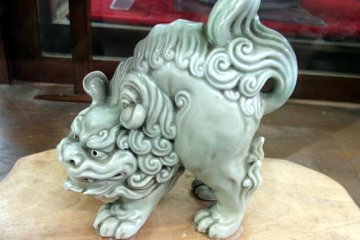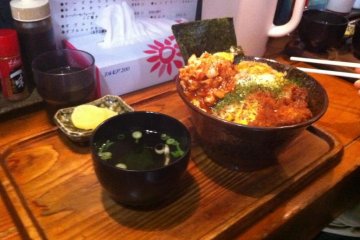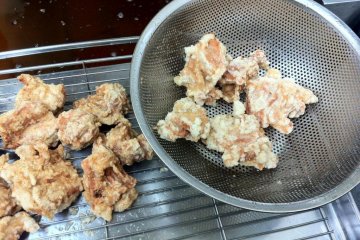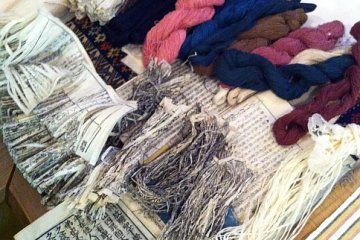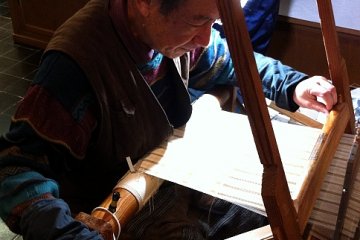The Saijo Folk Museum is located on the island formed by the moat of Saijo castle. The castle is long gone, replaced by a high school, and the Folk Museum is tucked into the southeast corner of the island. The museum is divided into two halves, a history museum on the left, and an arts and crafts museum on the right. Here, we’ll have a look at the arts and crafts museum, the Ehime Mingeikan.
Entry to the museum is 200 yen, and you must take off your shoes and put on some nasty plastic slippers. This inconvenience aside, the museum is a wonderful place. On the day that I visited, the cost of entrance was waived because an exhibition of textiles was being held. Laid out on rustic wooden tables and the tatami mat flooring at the sides were bales of material, artfully rolled out side by side to display the patterns. I’ve seen a number of exhibitions like this, and I rather enjoy them. But this one was a bit different.
A loom was set up in the corner of the room, with a naked electric bulb hanging over the seat. An elderly gentleman dressed in mixture of Western and Japanese clothes promptly accosted me and began to explain the loom and his spinning tools. I was very surprised to learn that he was weaving not with cotton or hemp but with paper. Yasushi Kondou, former headmaster of a local school, buys worthless old books made of washi paper, a type with very long fibers, and spins the pages into threads. He then dyes them with natural colorings such as onions for various shades of yellow, and weaves them into fabric on his hand loom.
He showed me a summer jacket that I took to be cotton. Again I was surprised to hear that it was made of paper, and it had been washed hundreds of times. It was wonderfully soft and light, with a subtle mix of natural colors. Kondou-sensei makes a variety of clothing and daily items from his fabrics – he showed me a Western gentleman’s shirt, a jacket made to a Laotian design, and tote bag. I wanted them all, but the bag was the cheapest item at 20,000 yen and rather beyond my means at the time.
The building itself is also of interest. Architecturally, it’s art nouveau with a Japanese flavor. All of the edges are rounded off creating a very fluid, harmonious interior that perfectly matches the purpose of the building. With the history museum in the other half the building, I spent a very enjoyable hour or so here, and would happily have spent longer if only time had permitted.



